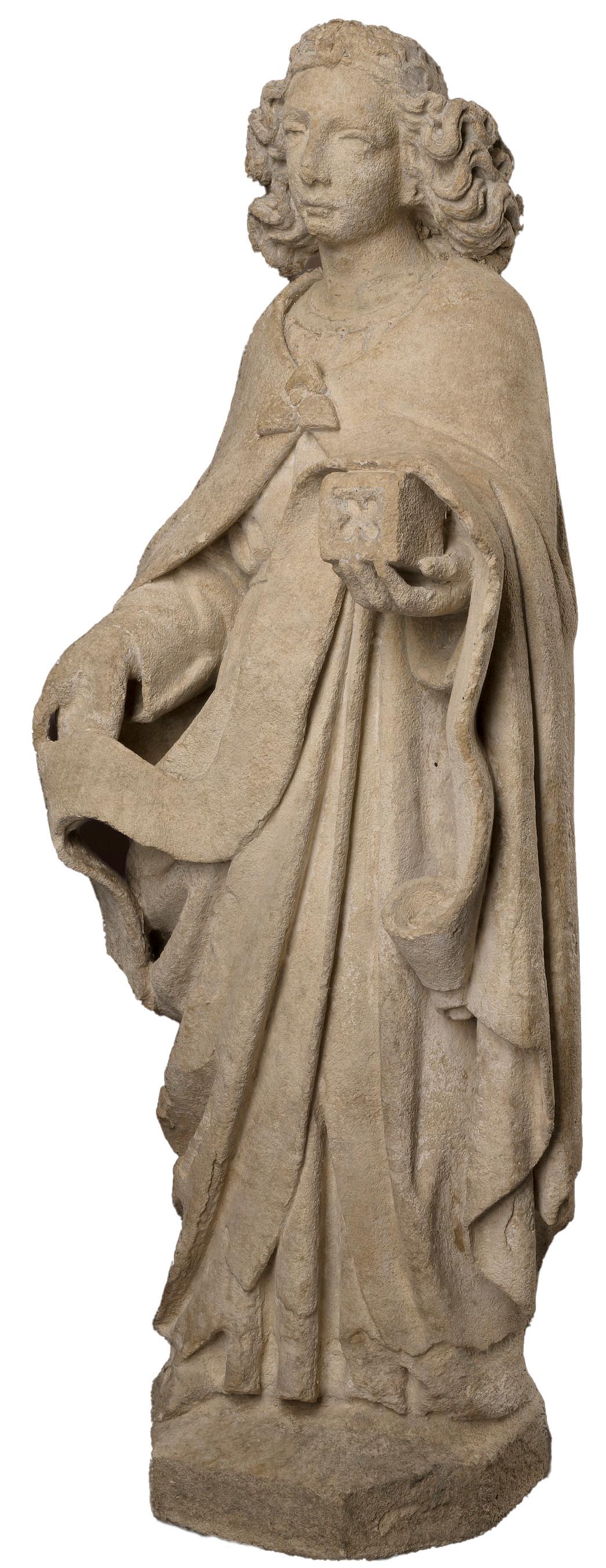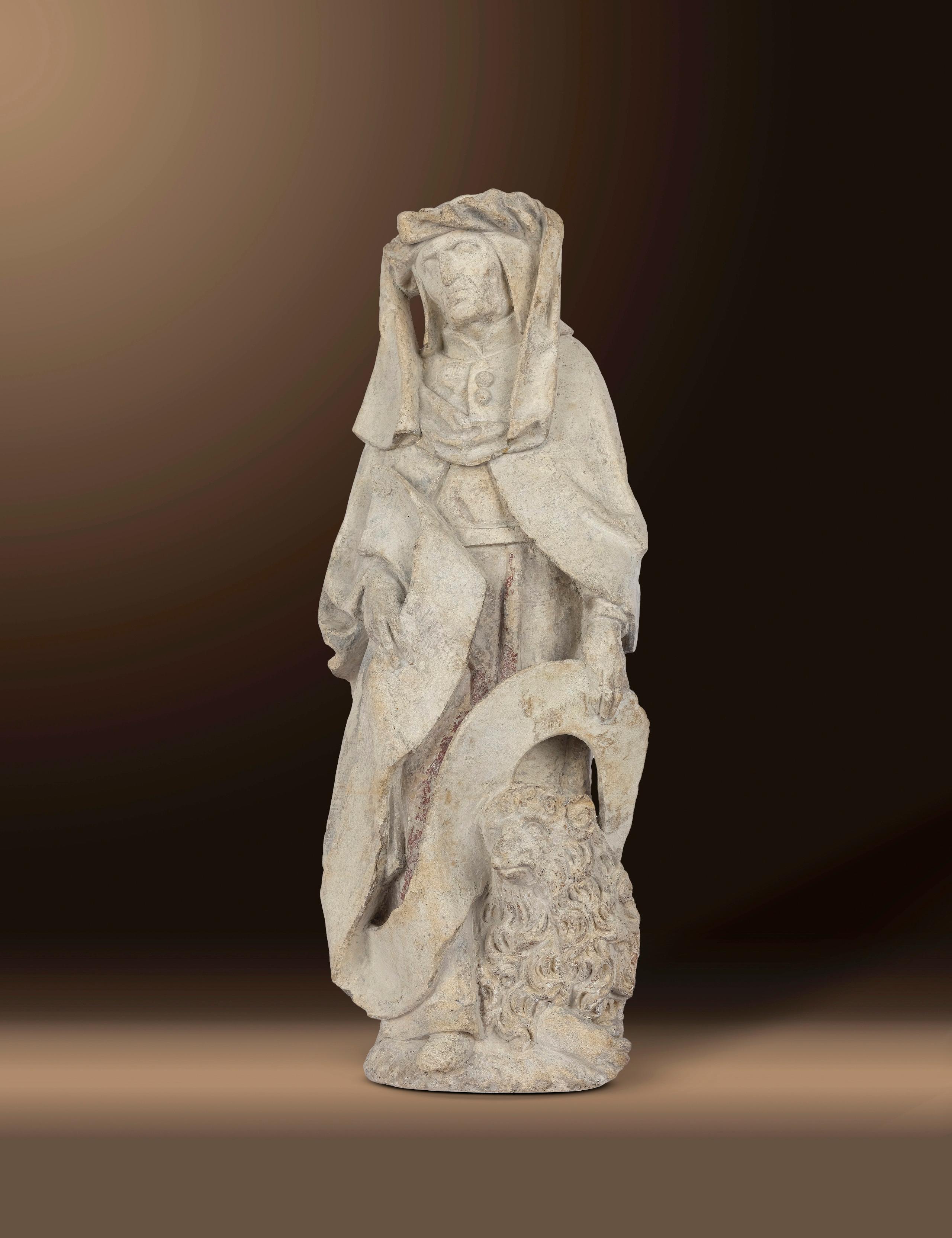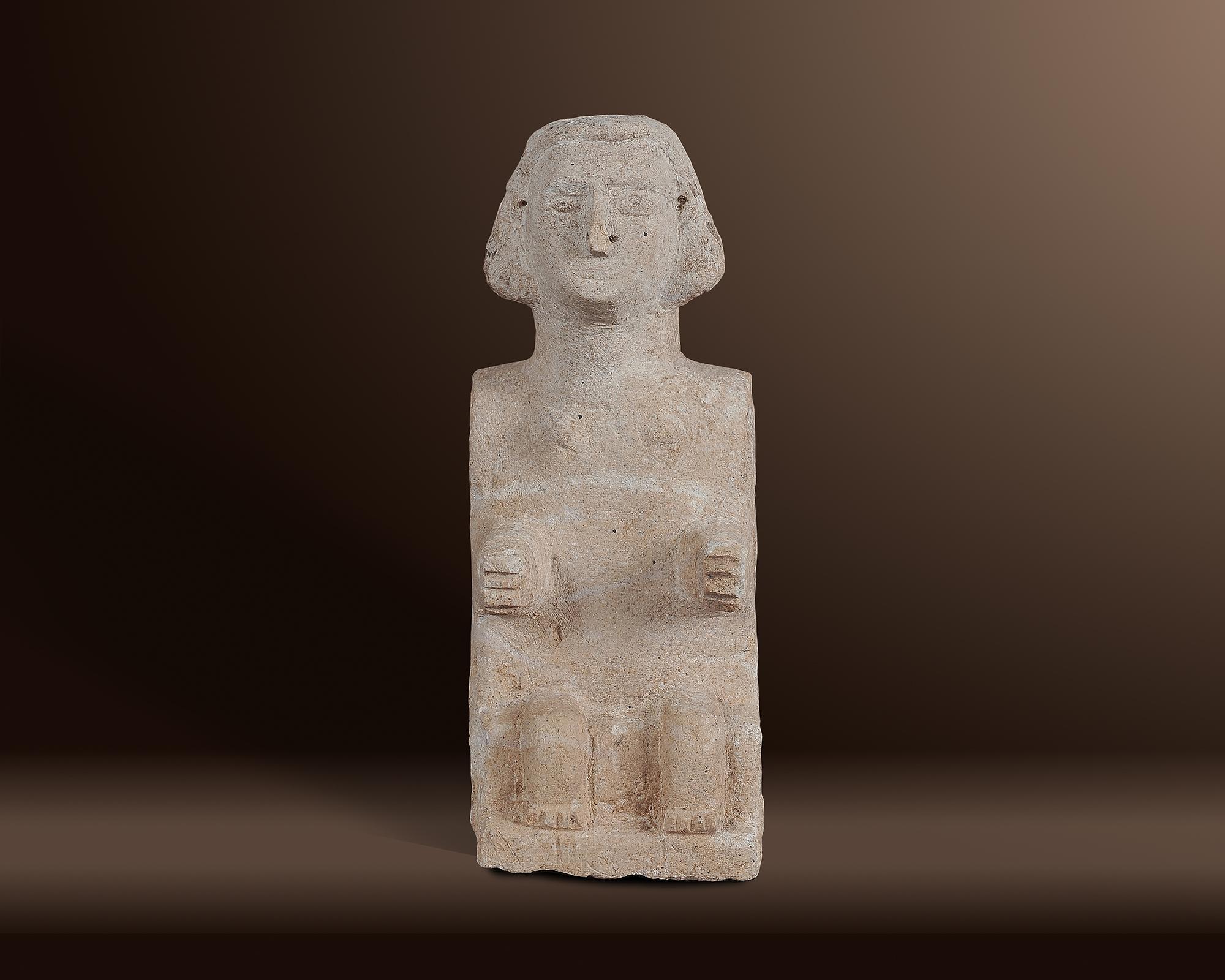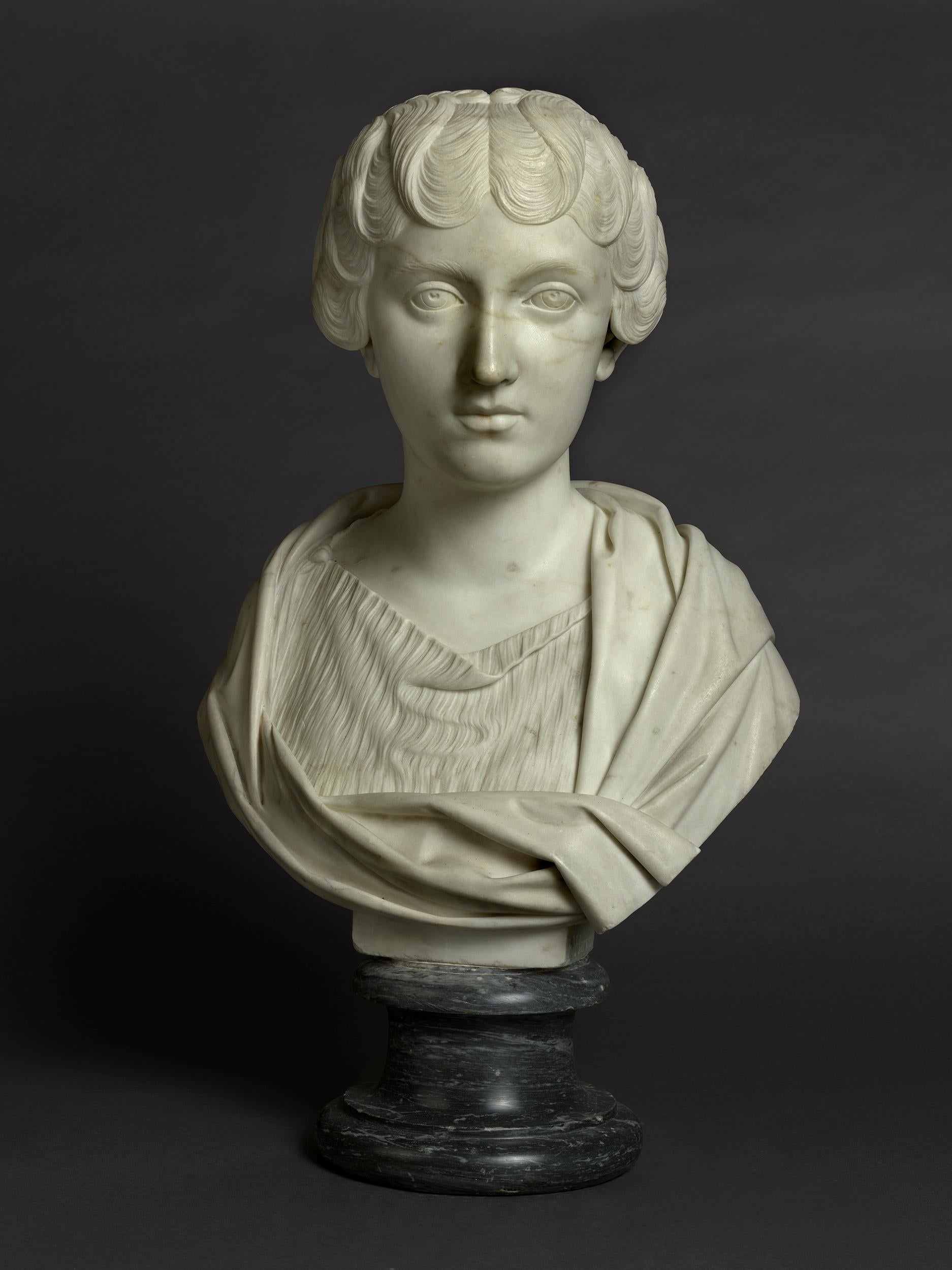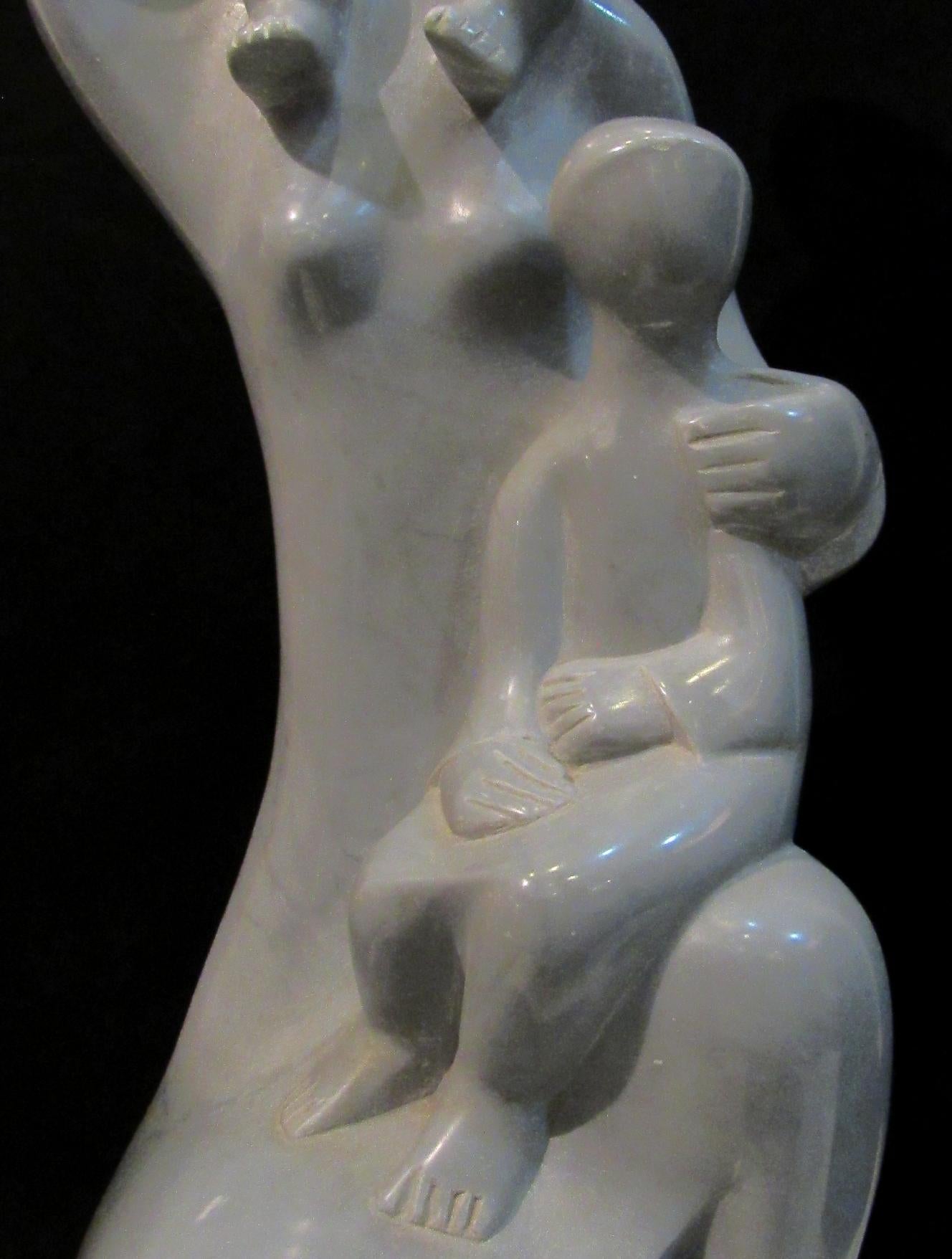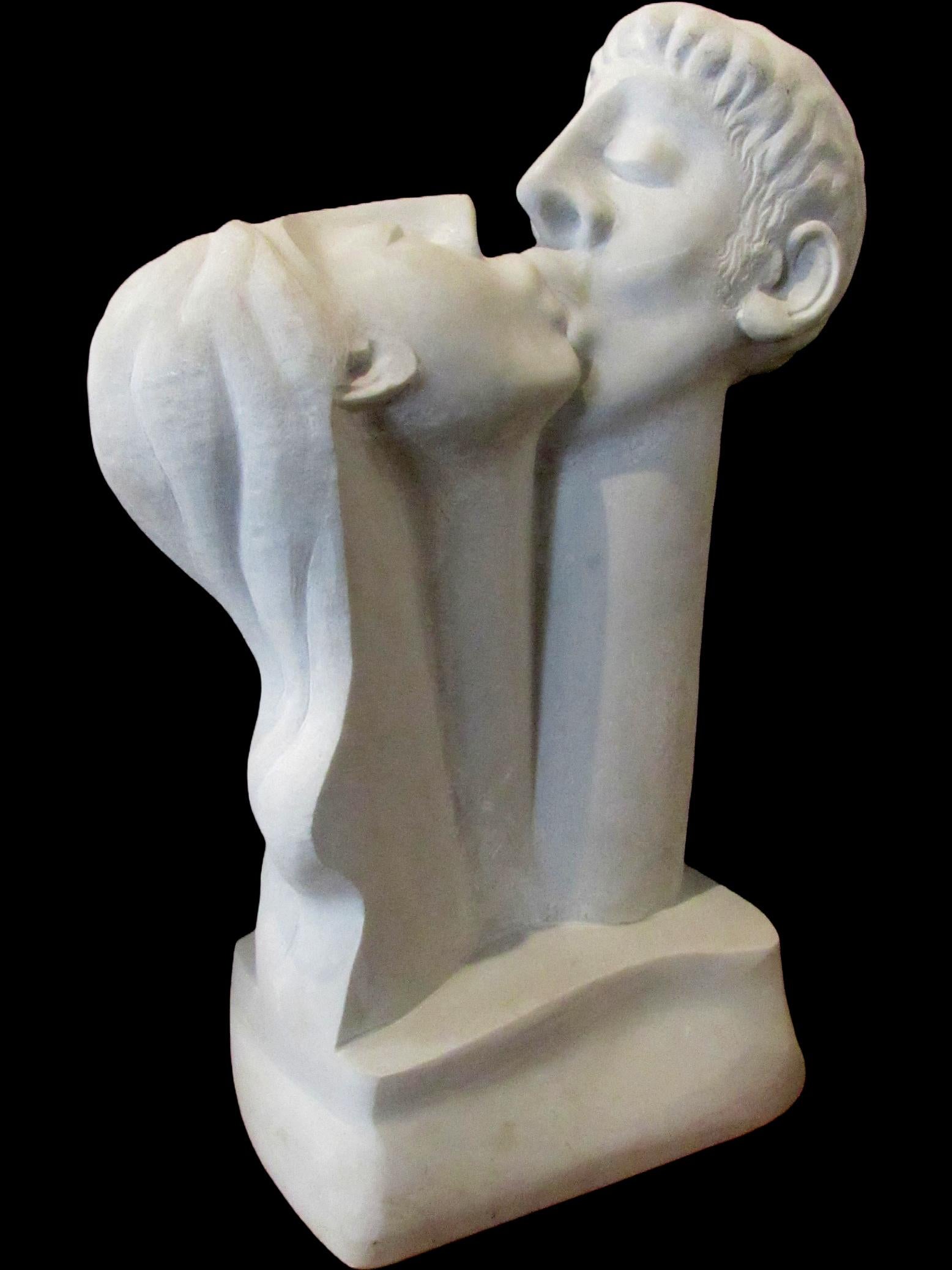Items Similar to Head of Avalokiteshvara, KHMER, Cambodia, Bayon Style
Want more images or videos?
Request additional images or videos from the seller
1 of 6
UnknownHead of Avalokiteshvara, KHMER, Cambodia, Bayon StyleKhmer, 12th-13th century
Khmer, 12th-13th century
About the Item
A gray sandstone head of Avalokiteshvara, Khmer, Cambodia, Bayon Style from the 13th century. The artwork is unsigned. Provenance: Charles Craig, Private Collection
Heather James Fine Art, Palm Desert, California
Exhibition: “Diverse Directions”, A Collectors Choice; Selections from the Charles Craig Collection, Santa Barbara Museum of Art, December 12, 1987 -February 7, 1988.
- Creation Year:Khmer, 12th-13th century
- Dimensions:Height: 12 in (30.48 cm)Width: 7 in (17.78 cm)Depth: 7 in (17.78 cm)
- Medium:
- Period:
- Condition:
- Gallery Location:Palm Desert, CA
- Reference Number:
About the Seller
4.8
Recognized Seller
These prestigious sellers are industry leaders and represent the highest echelon for item quality and design.
Established in 1996
1stDibs seller since 2011
100 sales on 1stDibs
Typical response time: 5 hours
- ShippingRetrieving quote...Ships From: Palm Desert, CA
- Return PolicyA return for this item may be initiated within 7 days of delivery.
More From This SellerView All
- Stone SculptureLocated in Palm Desert, CA"Stone sculpture" is a work made by Italian/American architect and urban planner, Paolo Soleri. The size of the sculpture is 8 1/4 x 3 5/8 x 3 3/4 inches. The work is signed undernea...Category
20th Century Abstract Figurative Sculptures
MaterialsStone
- Mujer DesnudaBy CASTANEDA, FELIPELocated in Palm Desert, CAA sculpture by Felipe Castaneda. ""Mujer Desnuda"" is a figurative sculpture, white and gray marble by Mexican contemporary artist Felipe Castaneda. The ar...Category
Late 20th Century Contemporary Figurative Sculptures
MaterialsMarble
- Mujer con GuitarraBy CASTANEDA, FELIPELocated in Palm Desert, CAA sculpture by Felipe Castaneda. Mujer con Guitarra"" is a figurative sculpture, white and gray marble by Mexican contemporary artist Felipe Castaneda. The artwork is unsigned. Felip...Category
Late 20th Century Contemporary Figurative Sculptures
MaterialsMarble
- Mujer HincadaBy CASTANEDA, FELIPELocated in Palm Desert, CAA sculpture by Felipe Castaneda. ""Mujer Hincada"" is a figurative sculpture, black onyx by Mexican contemporary artist Felipe Castaneda. The artwork is signed in the lower left, ""F...Category
Late 20th Century Contemporary Figurative Sculptures
MaterialsStone
- Procession with Horses, India, 12th CenturyLocated in Palm Desert, CAA stone sculpture by an unknown Indian artist. "Procession with Horses, India, 12th Century" is a royal procession scene from a medieval, Indian temple. ...Category
15th Century and Earlier Tribal Figurative Sculptures
MaterialsStone
- Gandharan Frieze with Scenes from the Life of BuddhaLocated in Palm Desert, CAA schist stone carving from 2nd/3rd Century Gandhara depicting scenes from the life of Buddha. Provenance: Spink and Sons LTD, 1985.Category
15th Century and Earlier Other Art Style Figurative Sculptures
MaterialsStone
You May Also Like
- Ancient DeityLocated in Wien, WienANCIENT DEITY Seated representation of God Southern Arabia Pre sabean 2nd - 1st millennium BC. Oolite limestone Height 24,5 cm Comparable works in the British Museum/London ...Category
15th Century and Earlier Figurative Sculptures
MaterialsLimestone
- Standing EngelLocated in Wien, WienStanding angel with banner Flemish Around 1450/60 Sandstone 60 x 21 x 15 cm This museum figurine shows a standing angel with a banner in his right hand and a small box in his left. The youthful, ageless figure wears a coat held together with a triangular, floral brooch in front of the chest over a long robe. The angel’s gaze is directed forward, his head tilted slightly to the left. The elongated face is sculpted: the large almond-shaped eyes with accentuated upper and lower eyelids are alertly open and sharp eyebrows lead directly into the root of the nose. The straight nose above the pronounced mouth completes the idealized oval face of the angel and his calm, internalized facial expression. What is particularly remarkable, however, is the magnificent curls, which are only partially tamed by a simple headband. As if puffed up by the wind, the hair, which is sometimes streaked in parallel, sometimes wildly twisted and richly curled, stands out dynamically from the ears. The tilted head with these sideways protruding waves of hair thus conveys an immediate impression of movement. The physicality of the sculpture is expressed particularly through this organic, lifelike movement of the loosened hair. The lively overall impression of the figure is further enhanced by the multiple rolled banners that the angel presents to the viewer. The outstretched palm of the right hand appears both intimate and confidential as well as mystically revealing. This banderole winds in gentle curves in front of the figure’s body, throws a fold over the second attribute in the angel’s left hand and falls downwards in a loose manner. The volute-shaped rolled up end of the banner clearly shows the fine texture of the banner and at the same time draws the viewer’s attention to the small cube-shaped box that the angel is holding in its slender, long-limbed fingers. The cube is decorated with a Gothic quatrefoil motif, which is often seen in the architectural tracery of windows, but was also often used to decorate caskets and other small treasures. The sweeping gestures in the presentation of the attributes suggest three-dimensionality, in contrast to the tubular folds at the base of the neck and the intricate draperies in flat and multiple overlapping garment sections. The soft curves of the folds give the impression that the clothing is made of a heavy fabric that falls diagonally down the front and is laid in several bowl folds under the right hand. Overall, the sculptural work testifies to the highest artistic skill, which emphasizes the virtuosity of sculpture in its precious and representative overall impression. The memorable characteristics recognizable here can be seen in comparable pictorial works from Utrecht around the middle of the 15th century, when sculptural art – especially stone sculpture – was characterized by a remarkably high quality. Particularly noteworthy is the accentuated Utrecht head type with an elongated oval face, almond-shaped eyes with heavy lids and dense, vividly protruding tufts of hair framing the head. For example, the figure is comparable to a capital of an angel on the east side of the rood screen of the Joriskerk in Amersfoort (province of Utrecht) from the second quarter of the 15th century. Not only the physiognomy and hair, which in the comparative example stand somewhat more horizontally to one side, but also the garment puff above the girdle are similar. Even more related motifs, such as the cleverly placed bowl folds, can be found on the limestone figure...Category
15th Century and Earlier Figurative Sculptures
MaterialsSandstone
- Hl. HieronymusLocated in Wien, WienSt. Jerome 347 Stridon, Croatia - 420 Bethlehem Around 1500/20 Limestone Remains of the original polychromy Height 45 cm The man with the holy name! 347 Stridon, Croation – 420 Be...Category
16th Century Figurative Sculptures
MaterialsLimestone
- Eighteenth-century Grand Tour marble bust of Faustina the YoungerLocated in London, GBSigned and dated: ‘F. Harwood Fecit 1764’ Collections: Probably commissioned by Alexander Gordon, 4th Duke of Gordon (1743-1827); Probably by descent at Gordon Castle, Banffshire to c.1948; Possibly acquired by Bert Crowther of Syon Lodge, Middlesex; Jacques Hollander (1940-2004); Christie’s, 5 December 2013, lot 101; Private collection; Sotheby’s, 2 July 2019, lot 106 Literature: John Preston Neale, Views of the seats of noblemen and gentlemen, in England, Wales and Scotland, London, 1822, vol.I, unpaginated. This marble copy of an ancient bust in the Musei Capitolini usually identified as Faustina the Younger, the daughter of Antoninus Pius and future wife of Marcus Aurelius, was made in Florence by Francis Harwood in 1764. Harwood was one of the most prolific suppliers of decorative marbles for the Grand Tour market and this finely worked example demonstrates the quality of luxury goods available to travellers to Italy. So often anonymous, this unusually signed and dated example, raises questions about the status of marble copies in the period and of sculptors such as Harwood who are known principally for ornamental work. Harwood’s origins remain obscure. He is documented living in Palazzo Zuccari with Joshua Reynolds and the Irish sculptor Simon Vierpyl at Easter 1752, he had certainly settled permanently in Florence by the following year, when he is recorded working with Joseph Wilton. He was admitted to the Florentine Academy on 12 January 1755 (as pittore Inglese, although he was described as scultore in the matriculation account). After Wilson returned to England in 1755 Harwood appears to have worked in a studio near SS. Annunziata with Giovanni Battista Piamontini who had made life-size copies of The Wrestlers and The Listening Slave for Joseph Leeson in 1754. In 1758 both sculptors were contracted to make a statue and a trophy to complete the decoration of the Porta San Gallo, Harwood completing a statue of Equality, installed the following year. By 1760 Harwood was on the brink of his most productive period as a sculptor, producing copies of celebrated antiquities for the ever-increasing audience of Grand Tour travellers and for the domestic market in London. In 1761 Harwood met the young architect James Adam who was in Italy specifically to make contact with suppliers for Robert Adam’s burgeoning practice back in Britain. The Adams offered a remarkably cohesive design package to their clients, encompassing not just architecture, but fixtures, fittings and furniture as well. Harwood was able to supply the brothers with marbles for their new interiors. At Syon, for example, Harwood produced a full-size copy of Michelangelo’s Bacchus for the new dining room the Adams had designed for Hugh Smythson, 1st Duke of Northumberland. Harwood seems to have also specialised in producing sets of library busts. In 1758 Charles Compton, 7th Earl of Northampton, a distinguished traveller commissioned a set of busts which remain in situ at Castle Ashby in Northamptonshire. It is perhaps no coincidence that the Adam brothers were producing designs for new interiors at Castle Ashby at this date. The set included representations of: Cicero, Julius Caesar, Marcus Aurelius, Faustina the Younger, Sappho, Seneca and Homer. Each of these busts Harwood seems to have replicated for multiple patrons, another Adam patron, Thomas Dundas...Category
18th Century Old Masters Figurative Sculptures
MaterialsMarble
- Daniel Kafri, "Family", 1989, grey bordilio marble sculpture, 67x24x26 cmLocated in Jerusalem, ILDani Kafri "Family", 1989 grey bordilio marble 72x24x26 cm On the last day of WW2, in Czechoslovakia – 1945, Daniel Kafri was born on the brink between man...Category
1990s Figurative Sculptures
MaterialsMarble
- Daniel Kafri, "Kiss", 1989, white carrara marble sculpture, 65x50x32 cmLocated in Jerusalem, ILDani Kafri "Kiss", 1989 white carrara marble 72x24x26 cm On the last day of WW2, in Czechoslovakia – 1945, Daniel Kafri was born on the brink between manki...Category
1990s Figurative Sculptures
MaterialsMarble
Recently Viewed
View AllMore Ways To Browse
Antique Stone Head
13th Century
James Brown Sculpture
Early 13th Century
15th Century Stone Sculpture
15th Century Sculpture Head
Cambodian Antique
12th Century Stone
12th Century Sculpture
Cambodia Sculpture
Sandstone Head
Cambodia Stone
Sandstone Head Sculpture
Heather James Fine Art
Khmer Sculpture
Cambodia Head
Cambodian Head
Khmer Head
